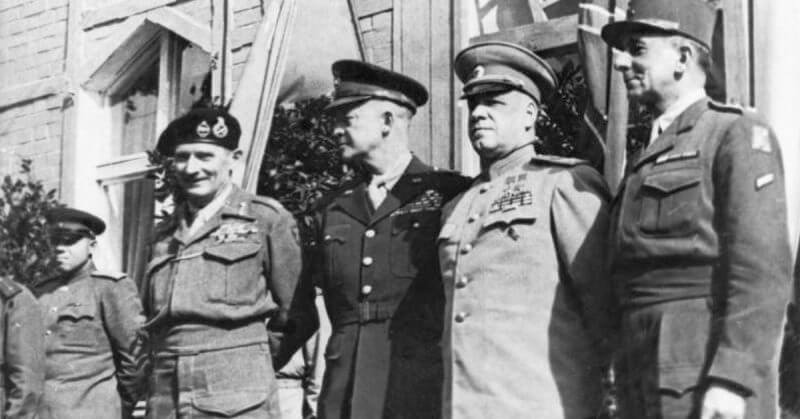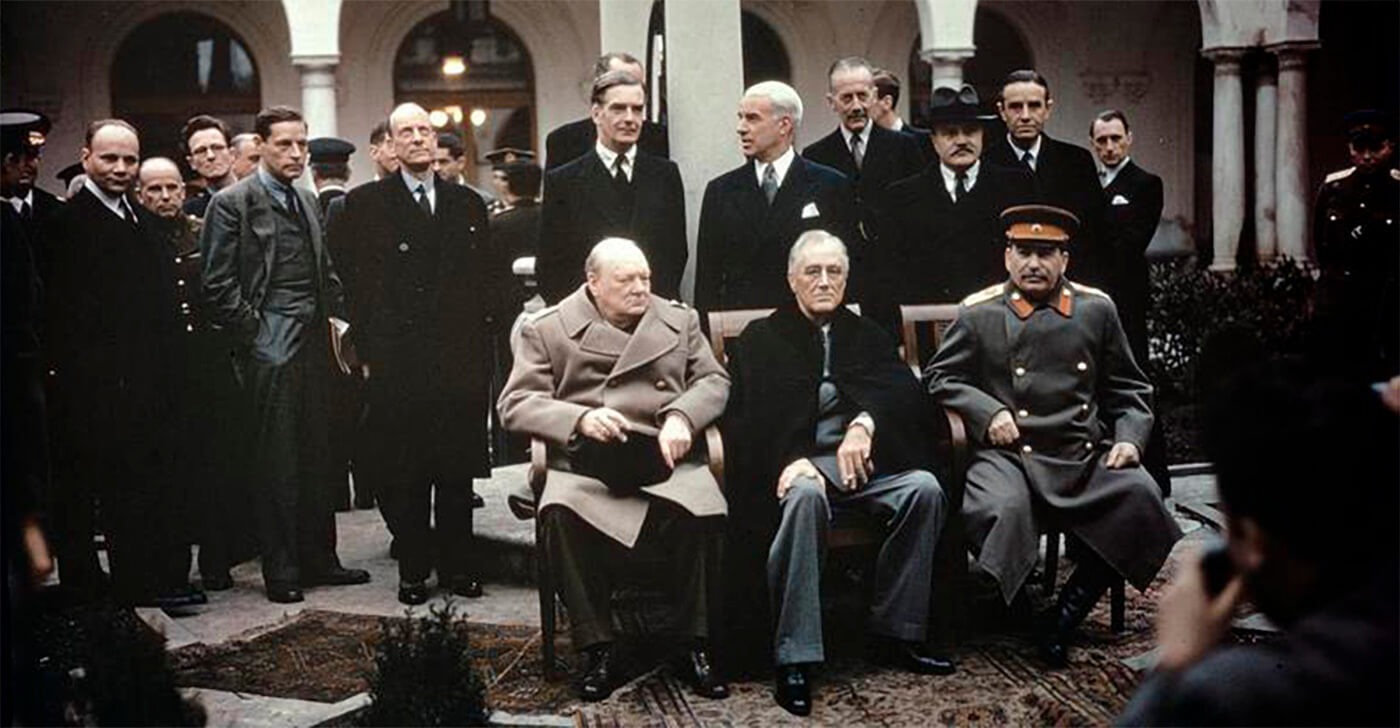| Page Created |
| May 25th, 2022 |
| Last Updated |
| January 11th, 2022 |
| The Allied Special Forces |
| Australia Belgium Canada Finland France Great Britain Greece India Italy Norway Poland The Netherlands The Soviet Union United States Yugoslavia Inter-Allied |
| History |
| The Allied nations in World War II were a coalition that gradually expanded as the war progressed, primarily united not by pre-existing alliances but by a shared opposition to the Axis powers. This coalition was a response to the aggressive expansion and declarations of war by Axis nations. The conflict’s roots can be traced back even earlier. On July 7th, 1937, Japan, which would later become a significant Axis power, declared war on China. This event, known as the Marco Polo Bridge Incident, marked the beginning of the Second Sino-Japanese War and can be seen as a prelude to World War II. While this conflict did not immediately set off a global reaction like the invasion of Poland, it was an early indication of the aggressive military ambitions of the Axis powers. The conventional starting point of World War II is often marked by Germany’s invasion of Poland on September 1st, 1939, followed by the Soviet Union’s invasion of Eastern Poland on September 17th, 1939, as part of the Molotov-Ribbentrop Pact. This invasion triggered a series of events that led to the rapid expansion of the war and the formation of the Allied group. On September 3rd, 1939, both Great Britain and France declare war on Germany. With this declaration they activate their treaties with Poland that they would help the country when Germany would attack them. Most countries of the commonwealth join Great Britain in the days afterwards. The same can be said from the French Colonies. At that moment, the Allied forces consist of Poland, Great Britain, France, and the countries of the Commonwealth and the French Colonies. The invasion of Poland by the Soviet Union remains unanswered by the Allied. On November 30th, 1939, the Soviet Union declares war on Finland and invades the country that very same day. For a brief time, Finland joins the Allied forces. Again, there are no declarations of war against the agressor but the British and French send some supplies to Finland and even consider sending a force. This idea is abandoned when Sweden doesn’t give a free passage for these troops. On April 9th, 1939Germany declares war on Denmark and Norway and invades these countries the very same day. One month later on May 10th, 1940, Germany declares war on The Netherlands, Luxemburg and Belgium. With this declaration they invade the Lower Countries and France. On June 10th, Italy joins Germany and declares war on Great Britain and France. One day later they also declare war on Belgium. After the defeat of the Lower Countries and France, Germany aims its arrows on Great Britain. While the Battle of Britain is in full swing, Italy declares war on Greece on October 28th, 1940. One year later war is declared on Yugoslavia and Italy invades North Africa. The game changers year are two events. On June 22nd, 1941, Germany starts the invasion of The Soviet Union and that country has to change sides to the Allied and on December 7th, 1941, Japan attacks the Pacific Fleet in Pearl Harbour, forcing The United States to leave their isolationistic policy. When these two giants join the Allies, the equation starts to shift fast. More and more countries are joining The Allied countries from that day on. From 1943 on, the pressure on the Axis starts increasing. One country after another is forced to leave the Axis and most join the Allies. By the end of the War Germany and Japan have barely any allies left. |
| The Allied, Part by date of Declarations of War |
 |
| July 7th, 1937 |
| China |
| September 1st, 1939 |
| Poland |
| September 3rd, 1939 |
| Great Britain France Australia New Zealand India Tonga Transjordan Morocco Tunisia |
| September 4th, 1939 |
| Nepal |
| September 6th, 1939 |
| South Africa |
| September 10th, 1939 |
| Bahrain Canada Oman |
| November 9th, 1939 |
| Kuwait |
| November 30th, 1939 – December 1st, 1941 (Switched sides to Axis) |
| Finland |
| April 9th, 1940 |
| Denmark Norway |
| April 12th, 1940 |
| Faroe Islands |
| June 10th, 1940 |
| The Netherlands Belgium Luxembourg |
| September 9th, 1940 |
| Egypt |
| October 1940 |
| Thailand |
| October 28th, 1940 |
| Greece |
| April 6th, 1941 (Switched sides to Allied) |
| Yugoslavia |
| June 22nd, 1941 |
| The Soviet Union (Switched sides to Allied) Tuva |
| December 7th,1941 |
| The United States Panama |
| December 8th, 1941 |
| Costa Rica Dominican Republic El Salvador Guatemala Haiti Honduras Nicaragua The Philippines Mongolia |
| December 9th, 1941 |
| Cuba |
| December 12th, 1941 |
| Czechoslovakia |
| January 1st, 1942 |
| The United Nations |
| May 5th, 1942 |
| Northern Rhodesia Southern Rhodesia Tanganyika Belgian Congo |
| May 22nd, 1940 |
| Mexico |
| June 13th, 1942 |
| Iroquois Confederacy |
| August 22nd, 1942 |
| Brazil |
| December 14th, 1942 |
| Ethiopia |
| January 17th, 1943 (Switched sides to Allied) |
| Iraq |
| January 20th, 1943 |
| Chile |
| April 7th, 1943 |
| Bolivia |
| September 8th, 1943 |
| Italy (Switched sides) Albania |
| September 9th, 1943 (Switched sides to Allied) |
| Iran |
| November 26th, 1943 |
| Columbia |
| January 27th, 1944 |
| Liberia |
| August 25th, 1944 (Switched sides to Allied) |
| Rumania |
| September 8th, 1944 (Switched sides to Allied) |
| Bulgaria |
| September 15th, 1944 (Switched sides to Allied) |
| Finland |
| September 21st, 1944 |
| San Marino |
| December 28th, 1944 (Switched sides to Allied) |
| Hungary |
| February 2nd, 1945 |
| Ecuador |
| February 7th, 1945 |
| Paraguay |
| February 12th, 1945 |
| Peru |
| February 15th, 1945 |
| Venezuela Uruguay |
| February 23rd, 1945 |
| Turkey |
| February 26th, 1945 |
| Syria Lebanon |
| February 28th, 1945 |
| Saudi Arabia |
| March 1st, 1945 (Switched sides to Allied) |
| Iran |
| March 27th, 1945 |
| Argentina |

